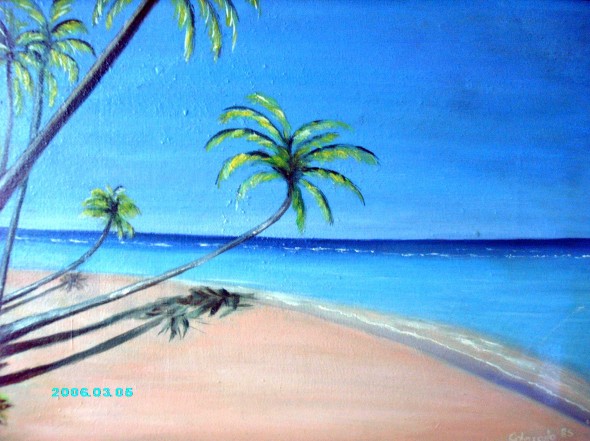Datos personales
ART THE BEST THING TO DO.
I BEEN ALL MY LIFE ADICT TO THE ART AND I DONT CONCEIVE MY LIFE WITHOUT ART. I LOVE PAINTIG, FOTHOGRAFY, POETRY,SING, ALL ART REALY.
I THINK THAT THE WORLD NEED ROSES AND NOT WAR.
IF WE JOINT OUR HEARTS WE CAN WORK FOR THE FREEDOM AND FOR THE PEACE.
Thanks for the visit, please joint me this is my new Blogspot!!!
I´m spanish from Sevilla. I olso have another blogs in spanish, visit me please, thanks!!!
I love all animals, I ASK FREDOM FOR ALL OF THEM!!!!
¡¡¡SPANISH PARIAMENT MUST STOP BULL FIGHT!!!
I THINK THAT THE WORLD NEED ROSES AND NOT WAR.
IF WE JOINT OUR HEARTS WE CAN WORK FOR THE FREEDOM AND FOR THE PEACE.
Thanks for the visit, please joint me this is my new Blogspot!!!
I´m spanish from Sevilla. I olso have another blogs in spanish, visit me please, thanks!!!
I love all animals, I ASK FREDOM FOR ALL OF THEM!!!!
¡¡¡SPANISH PARIAMENT MUST STOP BULL FIGHT!!!
Placa de Facebook
domingo, 1 de octubre de 2017
sábado, 5 de febrero de 2011
AKHENATON MY LOVE - ART 10 COLORADO - OIL PAINTING.

Akhenaten (pronounced /ˌɑːkəˈnɑːtən/; often also spelled Echnaton, Akhnaton, or rarely Ikhnaton; meaning Living spirit of Aten) was known before the fifth year of his reign as Amenhotep IV (sometimes given its Greek form, Amenophis IV, and meaning Amun is Satisfied), a Pharaoh of the Eighteenth dynasty of Egypt, ruled for 17 years and died in 1336 BC or 1334 BC. He is especially noted for abandoning traditional Egyptian polytheism and introducing worship centered on the Aten, which is sometimes described as monotheistic or henotheistic. An early inscription likens him to the sun as compared to stars, and later official language avoids calling the Aten a god, giving the solar deity a status above mere gods.
Akhenaten tried to bring about a departure from traditional religion, yet in the end it would not be accepted. After his death, traditional religious practice was gradually restored, and when some dozen years later rulers without clear rights of succession from the Eighteenth Dynasty founded a new dynasty, they discredited Akhenaten and his immediate successors, referring to Akhenaten himself as "the enemy" in archival records.
He was all but lost from history until the discovery, in the 19th century, of Amarna, the site of Akhetaten, the city he built for the Aten. Early excavations at Amarna by Flinders Petrie sparked interest in the enigmatic pharaoh, which increased with the discovery in the Valley of the Kings, at Luxor, of the tomb of King Tutankhamun, who has been proved to be Akhenaten's son according to DNA testing in 2010 by Zahi Hawass of Cairo.[6] Akhenaten remains an interesting figure, as does his Queen, Nefertiti. Their modern interest comes partly from his connection with Tutankhamun, partly from the unique style and high quality of the pictorial arts he patronized, and partly from ongoing interest in the religion he attempted to establish.
____________________________________________________________________________________________________________________________________________________________
Neferjeperura Amenhotep,[ más conocido como Ajenatón,Akhenatón o Akenatón,[fue el décimo faraón de la dinastía XVIII de Egipto. Su reinado está datado en torno a 1353-1336 a. C. y pertenece al periodo denominado Imperio Nuevo de Egipto. Hacia el cuarto año de su reinado, cambió su nombre a Neferjeperura Ajenatón.
Dentro de la historia del Antiguo Egipto, su reinado inicia el denominado Período de Amarna,debido al nombre árabe actual del lugar elegido para fundar la nueva capital: la ciudad de Ajetatón, esto es, «Horizonte de Atón».
Es célebre por haber impulsado transformaciones radicales en la sociedad egipcia, al convertir al dios Atón en la única deidad del culto oficial del Estado, en perjuicio del, hasta el momento, predominante: el culto a Amón. Dichos cambios se desarrollarían a lo largo de varios reinados después del suyo y se detendrían con el fin de la dinastía. Es el primer reformador religioso del que se tiene registro histórico. Con todo, su reinado no sólo implicó cambios en el ámbito religioso, sino también reformas políticas y artísticas.
AAAAAAAAAAAAAAAAAAAAAAAAAAAAAAAAAA
Aunque tardíamente descubierto y todavía poco conocido, está considerado por muchos historiadores, arqueólogos y escritores, como uno de los faraones más interesantes .
Lo empece a pintar antes de la revuelta de Egipto, el fue siempre mi faraon preferido, desde aqui deseo al pueblo egipcio paz, democracia, libertad, respeto, amor, comprension y que todo llegue a buen fin, gracias a todos por compartir!!!
Akhenaten tried to bring about a departure from traditional religion, yet in the end it would not be accepted. After his death, traditional religious practice was gradually restored, and when some dozen years later rulers without clear rights of succession from the Eighteenth Dynasty founded a new dynasty, they discredited Akhenaten and his immediate successors, referring to Akhenaten himself as "the enemy" in archival records.
He was all but lost from history until the discovery, in the 19th century, of Amarna, the site of Akhetaten, the city he built for the Aten. Early excavations at Amarna by Flinders Petrie sparked interest in the enigmatic pharaoh, which increased with the discovery in the Valley of the Kings, at Luxor, of the tomb of King Tutankhamun, who has been proved to be Akhenaten's son according to DNA testing in 2010 by Zahi Hawass of Cairo.[6] Akhenaten remains an interesting figure, as does his Queen, Nefertiti. Their modern interest comes partly from his connection with Tutankhamun, partly from the unique style and high quality of the pictorial arts he patronized, and partly from ongoing interest in the religion he attempted to establish.
____________________________________________________________________________________________________________________________________________________________
Neferjeperura Amenhotep,[ más conocido como Ajenatón,Akhenatón o Akenatón,[fue el décimo faraón de la dinastía XVIII de Egipto. Su reinado está datado en torno a 1353-1336 a. C. y pertenece al periodo denominado Imperio Nuevo de Egipto. Hacia el cuarto año de su reinado, cambió su nombre a Neferjeperura Ajenatón.
Dentro de la historia del Antiguo Egipto, su reinado inicia el denominado Período de Amarna,debido al nombre árabe actual del lugar elegido para fundar la nueva capital: la ciudad de Ajetatón, esto es, «Horizonte de Atón».
Es célebre por haber impulsado transformaciones radicales en la sociedad egipcia, al convertir al dios Atón en la única deidad del culto oficial del Estado, en perjuicio del, hasta el momento, predominante: el culto a Amón. Dichos cambios se desarrollarían a lo largo de varios reinados después del suyo y se detendrían con el fin de la dinastía. Es el primer reformador religioso del que se tiene registro histórico. Con todo, su reinado no sólo implicó cambios en el ámbito religioso, sino también reformas políticas y artísticas.
AAAAAAAAAAAAAAAAAAAAAAAAAAAAAAAAAA
Aunque tardíamente descubierto y todavía poco conocido, está considerado por muchos historiadores, arqueólogos y escritores, como uno de los faraones más interesantes .
Lo empece a pintar antes de la revuelta de Egipto, el fue siempre mi faraon preferido, desde aqui deseo al pueblo egipcio paz, democracia, libertad, respeto, amor, comprension y que todo llegue a buen fin, gracias a todos por compartir!!!
lunes, 28 de septiembre de 2009
MUJER DE PORCELANA. OIL PAINTING 10 COLORADO.
The process of oil painting varies from artist to artist, but often includes
certain steps. First, the artist prepares the surface. Although surfaces like linoleum, wooden panel, paper, slate, pressed wood, and cardboard have been used, the most popular surface since the 16th century has been canvas, although many artists used panel through the 17th century and beyond. Panel is more expensive, heavier, harder to transport, and prone to warp or split in poor conditions. For fine detail, however, the absolute solidity of a wooden panel gives an advantage.The artist might
sketch an outline of their subject prior to applying pigment to the surface. "Pigment" may be any number of natural substances with color, such as sulphur for yellow or cobalt for blue. The pigment is mixed with oil, usually linseed oil but other oils may be used as well. The various oils dry differently, creating assorted effects.
THANKS FOR THE VISIT.
certain steps. First, the artist prepares the surface. Although surfaces like linoleum, wooden panel, paper, slate, pressed wood, and cardboard have been used, the most popular surface since the 16th century has been canvas, although many artists used panel through the 17th century and beyond. Panel is more expensive, heavier, harder to transport, and prone to warp or split in poor conditions. For fine detail, however, the absolute solidity of a wooden panel gives an advantage.The artist might
sketch an outline of their subject prior to applying pigment to the surface. "Pigment" may be any number of natural substances with color, such as sulphur for yellow or cobalt for blue. The pigment is mixed with oil, usually linseed oil but other oils may be used as well. The various oils dry differently, creating assorted effects.
THANKS FOR THE VISIT.
sábado, 22 de agosto de 2009
OIL PAINTING 10 COLORADO. AGUA DEL RIO.

The paint tube was invented in 1841 and artists were liberated from the studio. Artists no longer needed to grind each pigment by hand and carefully mix the binding oil in the proper proportions. Paints were made in bulk and sold in tin tubes with a cap. The cap could be replaced and the paints preserved for future use. The manufactured paints had a balanced consistency that the artist could thin with turpentine if he chose. No longer bound to the studio, they could work outside in direct sunlight, misty fog, at dawn or twilight.
Paint in tubes also changed the way artists applied paint to the canvas. Painting became much more spontaneous. Artists were no longer obliged to paint in careful layers of thinned pigments and varnish, although they could use that time-tested method if they chose. With paint in tubes, a greater variety of techniques could be employed, such as blending the paint on the canvas and painting directly on the raw, ungessoed surface. The effect of paint in tubes was so important that it contributed to the rise of the impressionist style. The artist Renoir said, “Without tubes of paint, there would have been no impressionism.” Thanks to the mobility that paint in tubes provided, artists could capture the light of a fleeting moment of the day, and the impressions that it provided.
Many modern paint in tubes manufactures have extensive color testing done. The results of this test will tell the artist which paint will last the longest without the colors altering after a period of time. This is important to pay attention to when selecting oil or acrylic paints.
GRACIAS A TODOS POR LAS VISITAS!!!
THANKS FOR THE VISIT!!!
viernes, 24 de julio de 2009
miércoles, 17 de junio de 2009
NOT SMOKE PLEASE. PAINTIG 10 COLORADO.

A painting is a artistic design or picture in paint to bring artistic effects and expressions. Painted renditions of objects, events, individuals, emotions, and virtues have been created by human beings since the very beginnings of recorded history. The various styles of painted representation that have emerged throughout the duration of mankind have served to both inspire and influence the various human cultures from which these styles are borne. The individuals responsible for the creation of the works of art that ultimately serve as tools and vehicles for human stimulation are known as artists.
miércoles, 10 de junio de 2009
FLOR DEL ROMERO Y OTRAS. FOTOS 10 COLORADO




LAS FLORES SON COMO AMORES
CON UN MONTON DE COLORES
ALEGRA NUESTRO VIVIR.
WISHING YOU THE BEST. THANKS.
DESEANDO LO MEJOR PARA TODOS.
GRACIAS
http://cantautoraladyhagua.blogspot.com.es/2017/09/gustavo-adolfo-becquer-rima-liii.html?spref=tw
martes, 7 de abril de 2009
ART HISTORY III . OIL PAINTING FLOWER.

Although some of the books listed above attempt a global approach, they are universally strong in western art history. The books use representative examples from each era in order to create a story that blends changing styles with social history. The Western narrative begins with prehistoric art such as Stonehenge, before discussing the ancient world. The latter begins with Mesopotamia, then progresses to the art of Ancient Egypt, which then transitions to Classical antiquity. Classical art includes both Greek and Roman work. With the decline of the Roman Empire, the narrative shifts to Medieval art, which lasted for a millennium. The high intellectual culture of the Medieval period was Islamic, but the era also included Early Christian art, Byzantine art, Gothic art, Anglo-Saxon art, and Viking art. The Medieval era ended with the Renaissance, followed by the Baroque and Rococo. Sometimes another period, Mannerism, is inserted between Renaissance and Baroque, which is a visual hybrid. The eighteenth and nineteenth centuries included Neoclassicism, Romantic art, Academic art, and Realism in art. Art historians disagree when Modern art began, but it was either in the mid-eighteenth century with the artist Francisco Goya, the mid-nineteenth century with the industrial revolution or the late nineteenth century with the advent of Impressionism. The art movements of the late nineteenth through the early twenty first centuries are too numerous to detail here, but can be broadly divided into two categories: Modernism and Contemporary art. The latter is sometimes referred to with another term, which has a subtly different connotation, Postmodern art.
Although textbooks periodize Western art by movements, as described above, they also do so by century. Many art historians give a nod to the historical importance of Italian Renaissance and Baroque art by referring to centuries in which it was prominent with foreign terms. These include trecento for the fourteenth, quattrocento for the fifteenth, cinquecento for the sixteenth, seicento for the seventeenth, and settecento for the eighteenth.
sábado, 4 de abril de 2009
AMOROSAS OLEO.
The field of "art history" was developed in the West, and originally
dealt exclusively with European art history, with the High Renaissance
(and its Greek precedent) as the defining standard. Gradually, over the
course of the twentieth century, a wider vision of art history has
developed. This expanded version includes societies from across the
globe, and it usually attempts to analyze artifacts in terms of the
cultural values in which they were created. Thus, art history is now
seen to encompass all visual art, from the megaliths of Western Europe
to the paintings of the Tang Dynasty in China.
The history of art is often told as a chronology of masterpieces
created in each civilization in the world. It can thus be framed as a
story of high culture, epitomized by the Seven Wonders of the World,
which is somehow different from vernacular expressions. The latter can,
however, be integrated into art historical narratives, in which case
they are usually referred to as folk arts or craft. The more closely
that an art historian engages with these latter forms of low culture,
the more likely it is that they will identify their work as examining
visual culture or material culture, or as contributing to fields
related to art history, such as anthropology or archeology. In the
latter cases art objects may be referred to as archeological artifacts
dealt exclusively with European art history, with the High Renaissance
(and its Greek precedent) as the defining standard. Gradually, over the
course of the twentieth century, a wider vision of art history has
developed. This expanded version includes societies from across the
globe, and it usually attempts to analyze artifacts in terms of the
cultural values in which they were created. Thus, art history is now
seen to encompass all visual art, from the megaliths of Western Europe
to the paintings of the Tang Dynasty in China.
The history of art is often told as a chronology of masterpieces
created in each civilization in the world. It can thus be framed as a
story of high culture, epitomized by the Seven Wonders of the World,
which is somehow different from vernacular expressions. The latter can,
however, be integrated into art historical narratives, in which case
they are usually referred to as folk arts or craft. The more closely
that an art historian engages with these latter forms of low culture,
the more likely it is that they will identify their work as examining
visual culture or material culture, or as contributing to fields
related to art history, such as anthropology or archeology. In the
latter cases art objects may be referred to as archeological artifacts
OLEO. THE LAKE OF MY DREAM.

The history of art usually refers to the history of the visual arts of painting, sculpture and architecture . It is the history of one of the fine arts, others of which are the performing arts and literature. It is also one of the humanities. The term sometimes encompasses theory of the visual arts, including aesthetics. Considered encyclopedically, the history of art is an attempt to survey art throughout human history, classifying cultures and periods by their distinguishing features. This is undertaken by people and institutions with diverging goals, but whose efforts interrelate, including: academic art historians, museum curators, auction house personnel, private collectors, and religious adherents. Given these agendas, it is unsurprising that there are many ways of structuring a history of art, as will be outlined below.
Suscribirse a:
Entradas (Atom)
Raining in Haiti
iframe width="560" height="315" src="https://www.youtube.com/embed/MNtefsQMLqc" frameborder="0" allowfullscreen>
MY PLACE IN ART MAJEUR , VISIT ME PLEASE!!! THANKS!!!
LOVE THE ART.
-
-
Sorprenderse, extrañarse, es comenzar a entender - Sorprenderse, extrañarse, es comenzar a entender Autor: Ortega y Gasset [image: descargar app cita del dia]Hace 1 día
-
-
LITERATENEO. DIGNIFICAR LA MEMORIA DE LAS MUJERES - Esta es la tarea que vengo realizando desde hace más de 20 años. Por ellas. Por nosotras. Por las que hoy son. Por las que vendrán. Espero que nos acomp...Hace 5 semanas
-
Visit My NEW Artworks Shoppe Grand Opening for GREAT DEALS - CLICK HERE TO VISIT ARTWORKS SHOPPE , 2443 Winding Way, Tobyhanna, PA 18466, United States You may unsubscribe or change your contact details at any ti...Hace 5 meses
-
Fall Foliage in the Smoky Mountains by Palette Knife Painter Niki Gulley - Sadly, our Fall Foliage Freedom Tour has reached its end. What an amazing 6 week adventure!!! Fortunately, we might have saved the best for last, vis...Hace 5 meses
-
JERUSALEN Cantautora Lady Hagua desde aqui un grito por la paz ! A Cry ... - *ENLACES LADY HAGUA Deseando a todos buenos tiempos futuro, mucho amor y libertad! * *BANDCAMP **https://ladyhagua.bandcamp.com/* *TWITTER **https:...Hace 6 meses
-
-
Hydrangea in the Mix and a Source of Frames - Acrylic 6x6” on a panel Framed in a Verona mottled gold 1 1/4” with a 2” white linen matt If you are an artist looking to frame your paintings, the s...Hace 1 año
-
New website… - Why did the chickens cross the road? To get to the new website! I have an announcement…I have a new website going live later this week! This was long o...Hace 2 años
-
-
Retrato a grafito de Esty - Aprovechando el confinamiento para jugar con una de mis serie favoritas. He discutido mucho conmigo misma a cerca de la conveniencia de mejorar o no la si...Hace 3 años
-
More Cottages During Lockdown and a Change in Medium. - I've been thinking about why I'm drawing cottages lately. Maybe it's because there aren't many people around where we live and on our daily walks we rarel...Hace 4 años
-
-
Fotos de Macedonia del Norte - La ciudad de Ohrid, situada junto al lago del mismo nombre (que Macedonia del Norte comparte con Albania), es una maravilla declarada Patrimonio de la Hu...Hace 4 años
-
-
-
Filosofia de treball - Isabel Pons Tello (Barcelona, 1960) és Artista Visual i Professora d'Arts Plàstiques. Cursa estudis al Centre d’Art i Disseny de Barcelona (Escola Massana)...Hace 6 años
-
Expo "La alegría se impone nuevamente"- Inauguración - Para visitar el blog, hacé click aquí mismo:Hace 6 años
-
-
-
LUZ DE LUNA II: Love and roses to London - LUZ DE LUNA II: Love and roses to London: Mando mucho amor a Londres y al mundo ayer fue un mal dia, gracias por compartir Quisiera salva el planeta de tan...Hace 6 años
-
-
. - *Belas Artes & Natureza* *Se desejarem fazer algum comentário, por favor, deixe-o aqui.* *...* *If you wish to make any comment, please leave it here.*Hace 7 años
-
Does & Birds - Lovely doe grazing in the backyard. This is right before she had her fawn. This is the twin to the "Coyote Doe" below. Their mother had twins again this...Hace 7 años
-
by tearfulicon72105 on Traveling by Camel - UPDATE: Those serials did not work correctly. Here are some working key > http://ohh.nu/hgwcf *Video: *Traveling by Camel *Posted: *25 July 2016 *Voted: *Hace 7 años
-
Eat (2014) - Meilleur Eat en meilleur lookMaintenant, vous pouvez téléchargement complet Eat en meilleur look avec une durée Min et a été lancé en 2014-07-06 avec MPAA ...Hace 9 años
-
New Website - I have started a new website called Art Connections, paintings by cheryl ratcliff. Please check it out at http://www.cheryl-ra...Hace 9 años
-
-
Angels in my Studio - It's been quite a busy week since my last post. I got quite a bit done and was able to cross off a lot of things on my to do list! *Gasp* That is quite a s...Hace 9 años
-
Woah it's Been Awhile! - Hard to believe how fast time goes by! I'll have to make more time for blogging somehow?!...just finished this portrait, no you aren't seeing things, I d...Hace 9 años
-
-
My NEW Etsy Shop OPENING TODAY - Hello lovelies, How are you all? I am still here...but have not had a chance to blog recently... (I know,I know...even my Mum keeps asking...when will you ...Hace 11 años
-
-
-
-
Sofya Mashkarina - Pintora subrealista de origen ruso. Sofya nacio en Rusia,Perm.Esta bella y verde ciudad esta situado en las orillas del rio Kama al pie de los montes Urale...Hace 12 años
-
Vancouver, time-lapse en HD - Magnifico time-lapse sobre la ciudad de Vancouver, para quitarse el sombrero... Más información: http://www.timelapsehd.ca/Hace 13 años
-
'The Climb' Western Grulla Horse and Cowgirl Watercolor in Progress by Debbie Flood - Once I had "*Wild Flowers*" finished, it was time to get another underway! This is the Progress on *The Climb*. I loved the blues and oranges in this horse...Hace 13 años
-
Happy New Year! - *May you always have work for your hands to do.* *May your pockets hold always a coin or two.* *May the sun shine bright on your windowpane.* *May the rainb...Hace 13 años
-
Confluencias. - Visualizamos el comportamiento de un Principio Esférico (de una Esfera) en su primera Progresión en Línea por cada una de las caras de un Cubo. .Se resuel...Hace 14 años
-
DESDE AQUÍ MI VOZ Y MI COLABORACIÓN MÁS SOLIDARIA,... - DESDE AQUÍ MI VOZ Y MI COLABORACIÓN MÁS SOLIDARIA, PARA TODOS AQUELLOS QUE EL MUNDO NO OYE, PARA AQUELLOS QUE VIVEN EN EL TEDIOSO SENTIDO DE LA INTOLERANCI...Hace 15 años
-
-
Edna Kannan - La *"Azteca de Porcelana"* La polifacética y controversial artista latina es también conocida como "La Azteca de Porcelana". A lo largo de su vida se ha ...Hace 15 años
-
Earthlings - The video speaks for itself.... Earthlings - Intro Part 1 - Pets Part 2, 3,4,5 - Food Part 6 - Clothing Part 7,8 - Entertainment P...Hace 15 años
-
Dreams and their meanings - *ACORN*Dreaming of acorns predicts pleasant things & that much gain is to be expected. For a woman to dream of eating acorns denotes that s...Hace 15 años
-
cara x.jpg - [image: cara x.jpg] Fecha: 16 ago. 2008 15:34 Número de comentarios de la foto:0 Ver fotoHace 15 años
-
-
MAR CIELO Y FLOR - [image: MAR CIELO Y FLOR.jpg] Fecha: 28 jun. 2008 21:38 Número de comentarios de la foto:0 Ver fotoHace 15 años
-
-
-
-
-
-
-
-
-
-
ART EVER FOR EVER.
- http://www.artmajeur.com/saradiciero/
- http://remigiomegias.blogspot.com/
- DEMBISKI POESIA
- 10 COLORADO SISIBILIZARTE.
- 10 COLORADO AMOR LUZ Y COLOR.
- MI PAGINA CON NADROJ.
- PEPE MADRID ART.
- PEPA HERRERA ART.
- PUGACHOVA ART.
- ROLF KNIE PAINTER
- DAILY PAINTERS
- YESSY GALERY MAYA ART.
- BOTTICELLI CON VIVALDI.
- SANDRO BOTTICELLI.
- MONA LISA VIDEO.
- ART SPAIN
- DIEZCOLORADO YOU TUBE
- PICASA WEB GOOGLE.
ESPERANDO LA PESCA. OIL PAINTING
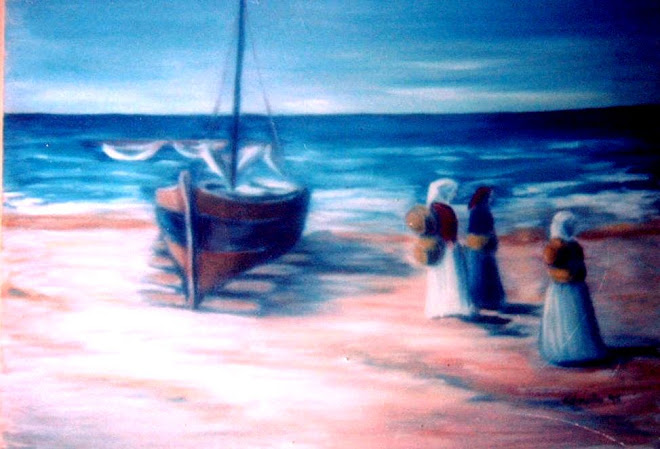
OLIVARES. OIL PAINTING.
WELCOME TO PAINTIG 10 COLORADO.
- A, PELAEZ TALASAC PAINTING.
- ALL TYPE OF PAINTING.
- ANA PARDO.
- ARTBYUS.COM
- FLICKR PHOTOS COLORADO ART.
- FREE PAINTING LESSONS
- INGLES COLLECTION
- MUSEO DEL PRADO.
- MUSICA PLAYER JAMENDO .COM
- PEDRO ZANS GONZALES. OIL PAINTING.
- RUSSIAN PAINTING
- SARA DICIERO
- VIDEO AFRICA ROSA II PAINTING.
- VIDEO AFRICA ROSA VIDEO.
- VIDEO CARAS X PAINTING 10 COLORADO.
- VIDEO FISH AND SEA PAINTING 10 COLORADO.
- VIDEO FRUIT AND FLOWER PAINTING.
- VIDEO MASK 2 PAINTING 10 COLORADO.
- VIDEO PAINTING 10 COLORADO UNIVERSO I
- VIDEO PAINTING DIEZ COLORADO.
- VIDEO PAINTING FACES 10 COLORADO
- VIDEO PAINTING MASK 10 COLORADO.
- VIDEO PAITING 10 COLORADO
- VIDEO PECES II PAINTING 10 COLORADO
- VIDEO PINTURAS OLEOS 10 COLORADO.
- VIDEO SAREGAMA MUSIC
- VIDEO STOP HUNTING WHALE, PLEASE.
- VIDEO THE BEST OF INDIAN MUSIC
- VIDEO UNIVERSO 2 PAINTING 10 COLORADO.
- WATER COLOR PAINTING.
MEDITERRANEO SEA. OIL PAINTING.

PIRAT SEA. OIL PAINTING.
CUBA LIBRE. MURAL ACRILIC.
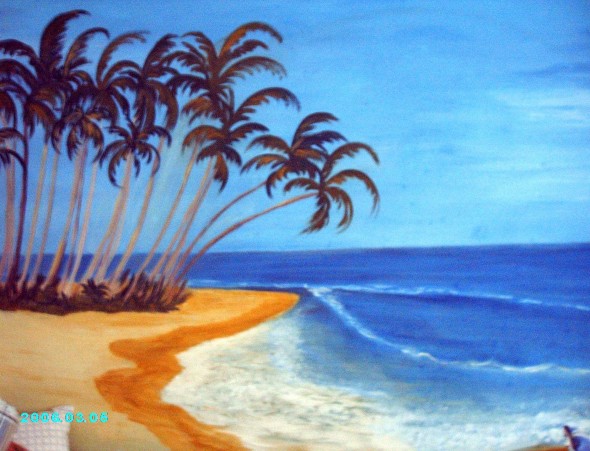
PUNTA ARENAS COSTA RICA. OIL PAINTING.
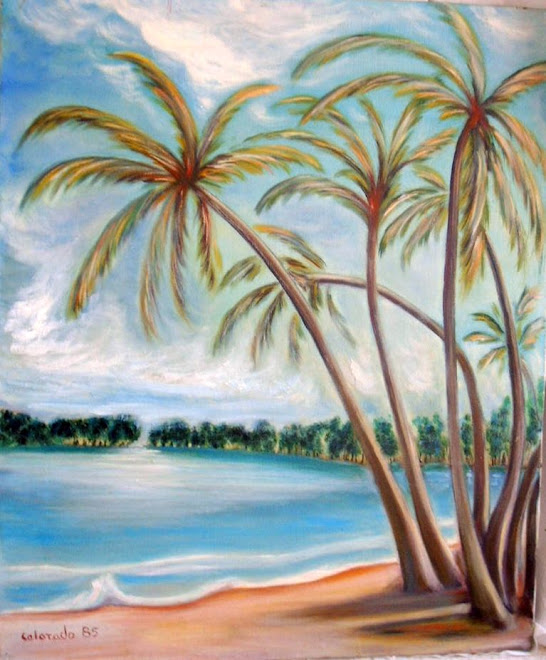
PALMA NOVA SEA. OIL PAINTING.
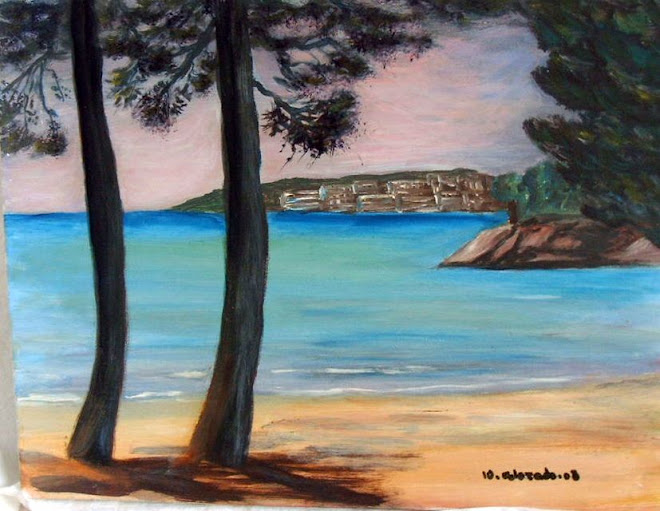
IBIZA SEA. OIL PAINTING.

COSTA DE LOS PINOS. OIL PAINTING.

THE BAY SEA. OIL PAUNTING

MAR ADRIATICO. OIL PAINTING.

Archivo del blog
ATARDECER EN MATALASCAÑA. OIL PAINTING.

EL BAÑO DEL UNICORNIO. OIL PAINTING.

CALADOR. OIL PAINTING.
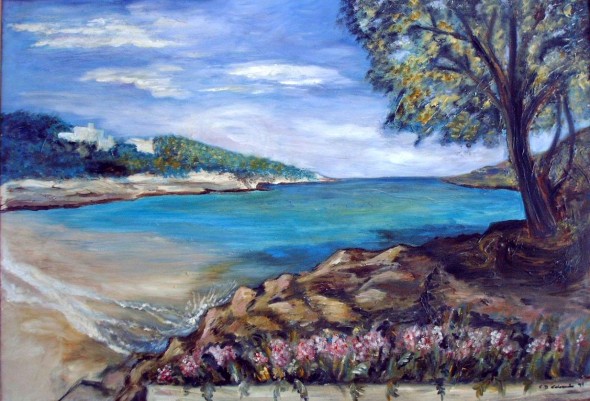
LA BAHIA DE LOS ALMENDROS. OIL PAINTING

REGATAS. OIL PAINTING

OLIVOS. OIL PAINTING.
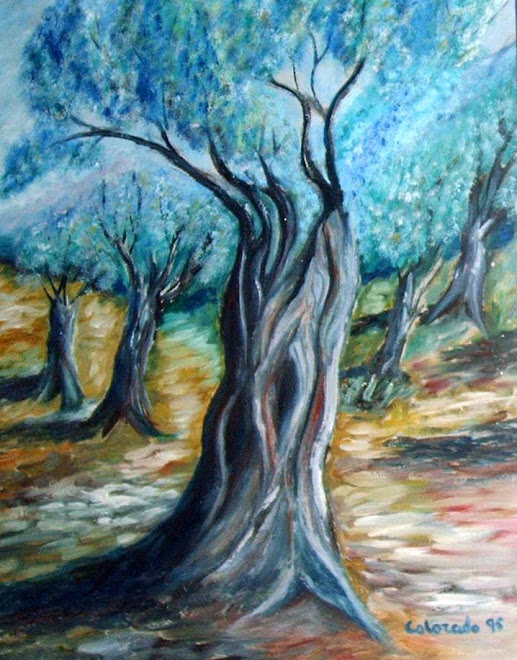
TUTI FRUTI. OIL PAINTING.

NARANJAS UVAS Y CIRUELAS. OIL PAINTIG
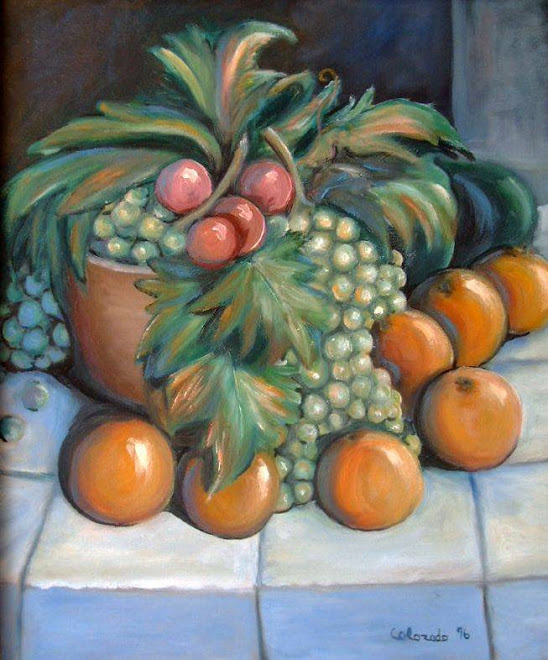















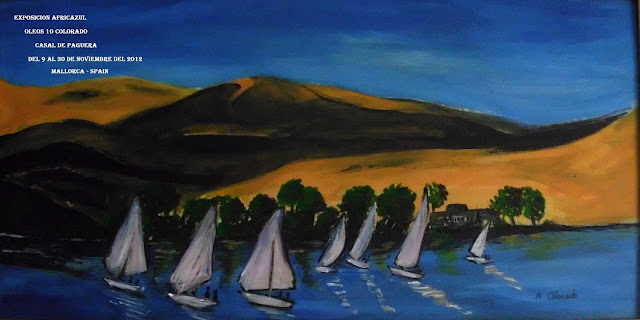

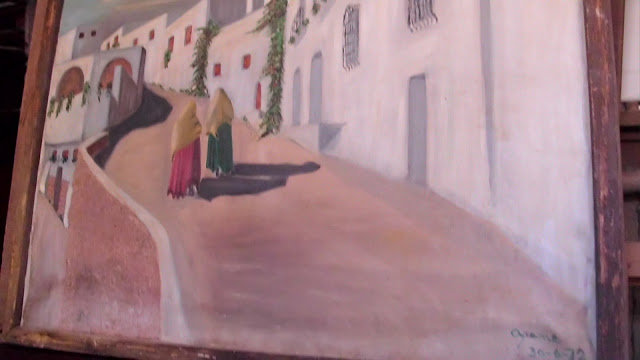




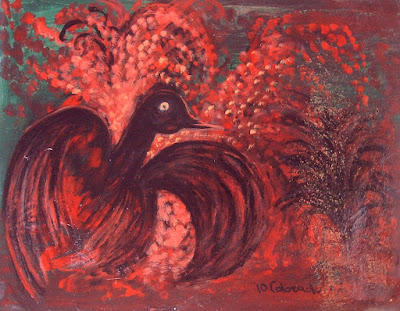





 Mary Carmen Diez Colorado - http://www.artmajeur.com/azules
Mary Carmen Diez Colorado - http://www.artmajeur.com/azules

.jpg)





























